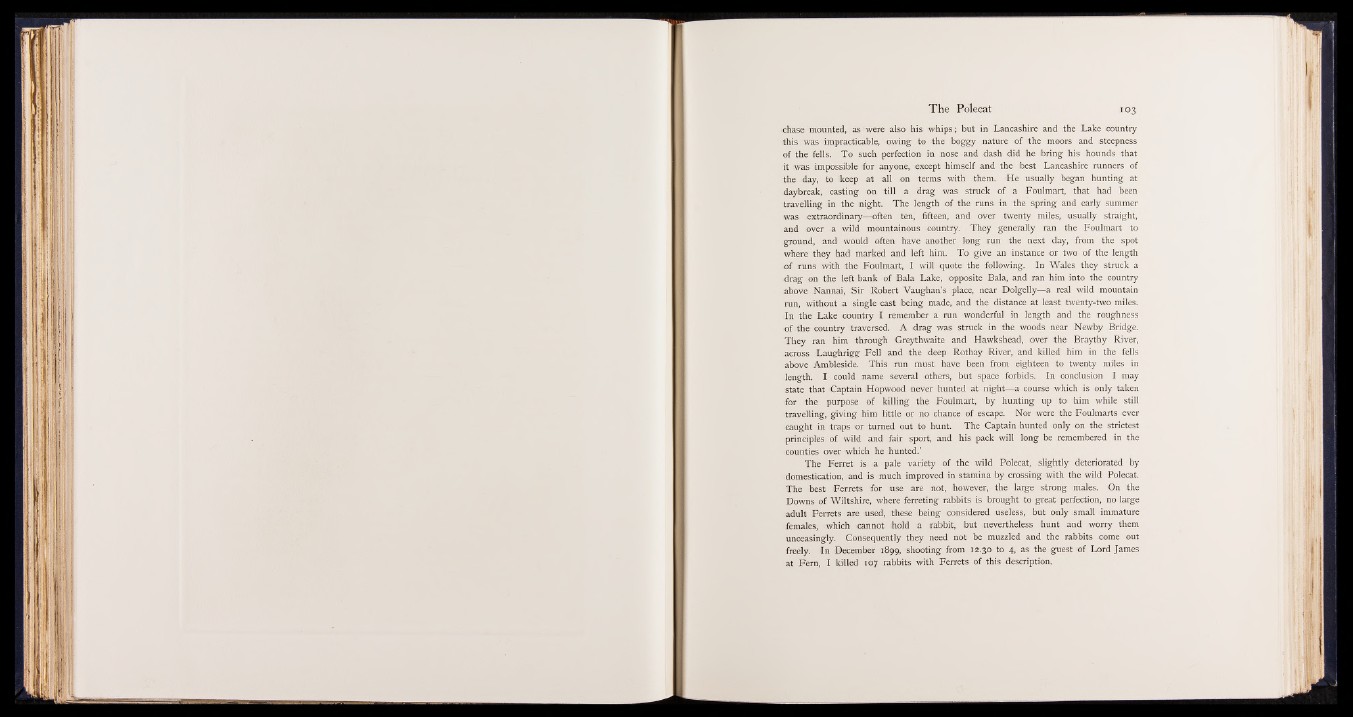
chase mounted, as were also his whips; but in Lancashire and the Lake country
this was impracticable, owing to the boggy nature of the moors and steepness
of the fells. To such perfection in nose and dash did he bring his hounds that
it was impossible for anyone, except himself and the best Lancashire runners of
the day, to keep at all on terms with them. He usually began hunting at
daybreak, casting on till a drag was struck of a Foulmart, that had been
travelling in the night. The length of the runs in the spring and early summer
was extraordinary—often ten, fifteen, and over twenty miles, usually straight,
and over a wild mountainous country. They generally ran the Foulmart to
ground, and would often have another long run the next day, from the spot
where they had marked and left him. To give an instance or two of the length
of runs with the Foulmart, I will quote the following. In Wales they struck a
drag on the left bank of Bala Lake, opposite Bala, and ran him into the country
above Nannai, Sir Robert Vaughan’s place, near Dolgelly—a real wild mountain
run, without a single cast being made, and the distance at least twenty-two miles.
In the Lake country I remember a run wonderful in length and the roughness
of the country traversed. A drag was struck in the woods near Newby Bridge.
They ran him through Greythwaite and Hawkshead, over the Braythy River,
across Laughrigg Fell and the deep Rothay River, and killed him in the fells
above Ambleside. This run must have been from eighteen to twenty miles in
length. I could name several others, but space forbids. In conclusion I may
state that Captain Hopwood never hunted at night—a course which is only taken
for the purpose of killing the Foulmart, by hunting up to him while still
travelling, giving him little or no chance of escape. Nor were the Foulmarts ever
caught in traps or turned out to hunt. The Captain hunted only on the strictest
principles of wild and fair sport, and his pack will long be remembered in the
counties over which he hunted.’
The Ferret is a pale variety of the wild Polecat, slightly deteriorated by
domestication, and is much improved in stamina by crossing with the wild Polecat.
The best Ferrets for use are not, however, the large strong males. On the
Downs of Wiltshire, where ferreting rabbits is brought to great perfection, no large
adult Ferrets are used, these being considered useless, but only small immature
females, which cannot hold a rabbit, but nevertheless hunt and worry them
unceasingly. Consequently they need not be muzzled and the rabbits come out
freely. In December 1899, shooting from 12.30 to 4, as the guest of Lord James
at Fern, I killed 107 rabbits with Ferrets of this description.